Home> Company News> Maximizing Oil Recovery With Pressure Compensated Hydraulic Pumps
- AddressToh Guan Centre, 31/F,69 Toh Guan Rd E, Singapore 608609
- Factory AddressToh Guan Centre, 31/F,69 Toh Guan Rd E, Singapore 608609
- Worktime9:00-18:00
- Phone(Working Time)0065-31591578
- Phone(Nonworking Time)0065-31591578
- Fax0065-31591339
Maximizing Oil Recovery With Pressure Compensated Hydraulic Pumps
2023-04-25 09:29:12A pressure compensated hydraulic pump is a type of hydraulic pump that maintains a constant pressure and flow rate, regardless of the load on the system. In hydraulic systems, oil recovery is critical for maintaining optimal performance and preventing damage to the system components. Pressure compensated hydraulic pumps play a crucial role in maximizing oil recovery and ensuring efficient system operation.
In hydraulic systems, oil recovery refers to the ability to recover and reuse oil that has been used to power the system. This is important because hydraulic systems operate under high pressure and require large amounts of oil to function. By maximizing oil recovery, hydraulic systems can reduce the amount of oil needed and decrease the system's environmental impact.
Pressure compensated hydraulic pumps are designed to maintain a constant pressure and flow rate, regardless of the load on the system. This is achieved through a pressure relief valve that adjusts the pump's output to maintain a consistent pressure level. By maintaining a constant pressure, pressure compensated hydraulic pumps can maximize oil recovery and ensure efficient system operation.
In this article, we'll explore the workings of pressure compensated hydraulic pumps, their benefits for oil recovery, maintenance and upkeep, troubleshooting tips, best practices, and future developments. By understanding the importance of pressure compensated hydraulic pumps in maximizing oil recovery, you can ensure optimal performance and efficiency for your hydraulic system.
Understanding Pressure Compensated Hydraulic Pumps
Pressure compensated hydraulic pumps are designed to maintain a constant pressure and flow rate, regardless of the load on the system. This is achieved through the use of a pressure relief valve that adjusts the pump's output to maintain a consistent pressure level.
There are two main types of pressure compensated hydraulic pumps: variable displacement pumps and fixed displacement pumps. Variable displacement pumps can adjust their output flow rate and pressure based on the system load, while fixed displacement pumps have a constant output flow rate and pressure.
Variable displacement pumps can be further classified into two types: axial piston pumps and swash plate pumps. Axial piston pumps use a series of pistons that rotate around a central shaft to vary the pump's output, while swash plate pumps use a slanted plate to vary the pump's output. Both types of variable displacement pumps are commonly used in hydraulic systems.
Pressure compensated hydraulic pumps offer several advantages over non-compensated pumps, including increased efficiency and reduced wear and tear on system components. By maintaining a constant pressure and flow rate, pressure compensated hydraulic pumps can prevent system overload and improve overall system performance. They are commonly used in a wide range of applications, including construction equipment, industrial machinery, and agricultural equipment.
In summary, pressure compensated hydraulic pumps are a type of hydraulic pump that maintains a constant pressure and flow rate, regardless of the load on the system. They offer several advantages over non-compensated pumps and are commonly used in a variety of applications.
Benefits of Pressure Compensated Hydraulic Pumps for Oil Recovery
Pressure compensated hydraulic pumps play a crucial role in maximizing oil recovery in hydraulic systems. By maintaining a constant pressure and flow rate, these pumps can ensure that the maximum amount of oil is recovered and reused in the system. In this section, we'll explore the benefits of pressure compensated hydraulic pumps for oil recovery.
One of the main benefits of pressure compensated hydraulic pumps for oil recovery is their ability to maintain a consistent pressure level, regardless of the system load. This means that the pump will adjust its output to match the system demand, ensuring that the maximum amount of oil is recovered and reused. This is particularly important in systems that operate under varying loads, as non-compensated pumps may struggle to maintain a consistent pressure level, leading to decreased oil recovery and system inefficiencies.
Another benefit of pressure compensated hydraulic pumps for oil recovery is their increased efficiency. By maintaining a consistent pressure level and flow rate, these pumps can prevent system overload and reduce the amount of energy needed to operate the system. This not only leads to increased oil recovery but also reduces the system's environmental impact by decreasing the amount of oil needed to operate the system.
In comparison to non-compensated pumps, pressure compensated hydraulic pumps offer improved reliability and longevity. The consistent pressure and flow rate provided by pressure compensated pumps reduces wear and tear on system components, leading to fewer breakdowns and longer system lifespan.
There are several case studies and examples of successful implementation of pressure compensated hydraulic pumps for oil recovery. For instance, in the oil and gas industry, pressure compensated pumps are used to recover oil and gas from wellheads and transport them to processing facilities. These pumps are critical for maximizing oil recovery and reducing the environmental impact of oil and gas extraction.
In summary, pressure compensated hydraulic pumps offer several benefits for oil recovery, including maintaining a consistent pressure level, increasing efficiency, improving reliability and longevity, and reducing the environmental impact of hydraulic systems. These benefits make pressure compensated hydraulic pumps an essential component of hydraulic systems used in a variety of industries, including oil and gas, construction, and agriculture.
Maintenance and Upkeep
Proper maintenance and upkeep are critical for ensuring the optimal performance and longevity of pressure compensated hydraulic pumps. In this section, we'll explore the importance of regular maintenance, recommended maintenance schedules, and tips for ensuring optimal pressure compensated hydraulic pump performance.
Regular maintenance is essential for preventing breakdowns and ensuring the continued operation of pressure compensated hydraulic pumps. Some key maintenance tasks include regular oil changes, filter replacements, and visual inspections of the pump and system components.
The recommended maintenance schedule for pressure compensated hydraulic pumps will depend on several factors, including the pump's usage, operating conditions, and manufacturer's recommendations. It's essential to consult the pump's manual and follow the recommended maintenance schedule to ensure proper upkeep.
Tips for ensuring optimal pressure compensated hydraulic pump performance include:
-
Regularly inspecting the pump and system components for signs of wear and tear, including leaks, cracks, and corrosion.
-
Changing the hydraulic oil and filters at regular intervals to ensure proper lubrication and prevent contamination.
-
Checking the pump's pressure relief valve and adjusting it as needed to maintain a consistent pressure level.
-
Monitoring the system's temperature and pressure levels to ensure that they are within the recommended range.
-
Following the manufacturer's recommendations for maintenance and replacement of system components.
By following these tips and recommended maintenance schedules, you can ensure optimal pressure compensated hydraulic pump performance and prevent breakdowns that can lead to decreased oil recovery and system inefficiencies.
In summary, proper maintenance and upkeep are critical for ensuring the optimal performance and longevity of pressure compensated hydraulic pumps. Regular maintenance tasks, following the recommended maintenance schedule, and monitoring the pump and system components are all essential for preventing breakdowns and ensuring continued operation.
Troubleshooting Pressure Compensated Hydraulic Pump Issues
Despite regular maintenance and upkeep, pressure compensated hydraulic pumps may experience issues that affect their performance and oil recovery capabilities. In this section, we'll explore some common pressure compensated hydraulic pump problems, how to diagnose them, and tips for resolving them.
Some common pressure compensated hydraulic pump problems include:
-
Low oil pressure: Low oil pressure can be caused by several factors, including a clogged filter, worn pump components, or a malfunctioning pressure relief valve. This can lead to decreased oil recovery and system inefficiencies.
-
High oil temperature: High oil temperature can be caused by several factors, including system overload, inadequate cooling, or a malfunctioning temperature control valve. High oil temperature can lead to decreased pump performance and increased wear and tear on system components.
-
Pump cavitation: Pump cavitation occurs when air or vapor is present in the pump's intake, leading to decreased pump performance and potential damage to system components.
To diagnose pressure compensated hydraulic pump issues, it's essential to perform a visual inspection of the pump and system components and monitor the system's temperature and pressure levels. You may also need to use diagnostic tools, such as pressure gauges and flow meters, to determine the root cause of the issue.
Tips for resolving pressure compensated hydraulic pump issues include:
-
Changing the hydraulic oil and filters to prevent contamination and ensure proper lubrication.
-
Adjusting the pressure relief valve to maintain a consistent pressure level.
-
Checking for leaks and replacing worn or damaged system components.
-
Ensuring that the system's temperature and pressure levels are within the recommended range.
-
Reducing the system load or increasing the cooling capacity to prevent system overload and high oil temperature.
By following these tips and diagnosing and resolving pressure compensated hydraulic pump issues promptly, you can prevent decreased oil recovery and system inefficiencies and ensure optimal pump performance.
In summary, pressure compensated hydraulic pumps may experience issues that affect their performance and oil recovery capabilities. Low oil pressure, high oil temperature, and pump cavitation are common issues that can be diagnosed and resolved through regular maintenance, visual inspections, and monitoring of system parameters. By following these tips, you can ensure optimal pressure compensated hydraulic pump performance and maximum oil recovery capabilities.
Best Practices
To achieve optimal oil recovery with pressure compensated hydraulic pumps, it's essential to follow best practices and manufacturer's recommendations. In this section, we'll explore some tips and best practices for achieving optimal oil recovery with pressure compensated hydraulic pumps.
-
Choose the right pump: Selecting the right pressure compensated hydraulic pump for your specific application is crucial for achieving optimal oil recovery. Consider factors such as flow rate, pressure range, and oil viscosity when selecting a pump.
-
Follow the manufacturer's recommendations: The manufacturer's recommendations for installation, operation, and maintenance of pressure compensated hydraulic pumps are essential for achieving optimal pump performance and oil recovery.
-
Monitor system parameters: Regularly monitoring the system's temperature and pressure levels, as well as the oil level and quality, is crucial for detecting and resolving issues that could affect oil recovery and pump performance.
-
Perform regular maintenance: Regular maintenance tasks, such as oil changes, filter replacements, and visual inspections of system components, are critical for ensuring the continued operation and optimal performance of pressure compensated hydraulic pumps.
-
Train operators: Proper operator training is essential for ensuring the safe and efficient operation of pressure compensated hydraulic pumps. Operators should be trained on the pump's operation, maintenance, and safety protocols.
-
Use quality components: Using high-quality system components, such as hoses, fittings, and seals, is essential for preventing leaks and ensuring optimal pump performance and oil recovery.
-
Address issues promptly: Promptly diagnosing and resolving issues that could affect pump performance and oil recovery is critical for preventing downtime and maximizing oil recovery.
By following these best practices, you can achieve optimal oil recovery with pressure compensated hydraulic pumps and prevent issues that could affect pump performance and oil recovery. It's essential to consult the manufacturer's recommendations and work with experienced professionals to ensure the safe and efficient operation of pressure compensated hydraulic pumps.
Future Developments
Pressure compensated hydraulic pump technology is continually evolving, with new advancements and innovations emerging to improve oil recovery and pump performance. In this section, we'll explore some emerging trends and potential future developments in pressure compensated hydraulic pump technology.
-
Smart pump technology: Smart pump technology utilizes sensors and monitoring systems to track and analyze pump performance in real-time, allowing for predictive maintenance and improved efficiency.
-
Digitalization and connectivity: Digitalization and connectivity allow for remote monitoring and control of pressure compensated hydraulic pumps, improving efficiency and reducing downtime.
-
Improved energy efficiency: Future developments in pressure compensated hydraulic pump technology are expected to focus on improving energy efficiency, reducing operating costs and environmental impact.
-
Alternative power sources: Pressure compensated hydraulic pumps may be powered by alternative power sources, such as solar or wind energy, to reduce reliance on fossil fuels and improve sustainability.
-
Improved material technology: Advancements in material technology may lead to the development of more durable and wear-resistant system components, reducing maintenance requirements and improving pump performance.
As pressure compensated hydraulic pump technology continues to evolve, it's essential to stay informed of new developments and innovations to ensure optimal pump performance and oil recovery capabilities. By incorporating emerging trends and advancements into pump selection and maintenance strategies, it's possible to improve efficiency, reduce costs, and improve sustainability in hydraulic systems.
Conclusion
In summary, pressure compensated hydraulic pumps play a critical role in maximizing oil recovery and ensuring optimal pump performance in hydraulic systems. Understanding how pressure compensated hydraulic pumps work, their advantages over non-compensated pumps, and their benefits for oil recovery is essential for selecting the right pump for your application and ensuring optimal pump performance.
Regular maintenance, monitoring of system parameters, and operator training are all critical for achieving optimal oil recovery with pressure compensated hydraulic pumps. By following best practices and manufacturer's recommendations, it's possible to prevent issues that could affect pump performance and oil recovery, ensuring the safe and efficient operation of pressure compensated hydraulic pumps.
Emerging trends and advancements in pressure compensated hydraulic pump technology, such as smart pump technology and alternative power sources, offer exciting opportunities to improve pump performance, reduce costs, and improve sustainability in hydraulic systems.
When selecting and maintaining pressure compensated hydraulic pumps, it's essential to work with experienced professionals and consult the manufacturer's recommendations to ensure the safe and efficient operation of hydraulic systems. By prioritizing maintenance, monitoring, and operator training, and incorporating emerging trends and advancements into pump selection and maintenance strategies, it's possible to achieve optimal oil recovery and pump performance in hydraulic systems.
Mud pump bearings Turntable bearings Agricultural bearings Angular Contact Bearings Duplex Angular Contact Bearings Industrial bearings Iron and steel industry bearings Power transmission bearing Hydrostatic centripetal bearing Ball Thrust Bearings Papermaking Machinery bearings Agricultural machinery bearing McGILL bearing Rexroth pump assay Komatsu motor parts BOSCH Fuel injector Hitachi excavator parts Axial Piston Pumps Sauer Danfoss pump Eaton pump parts Nachi pump assay Linde pump Mining Construction Ball Bearings Linear Bearings vane pumps gear pumps inc piston pumps Thin-Section Ball Bearings Adapter Sleeves pressure valves gear reducer relief valves Mcgill Bearing Die & Mold Plain-Bearing Bushings FAG Bearing Singapore SKF bearing Accessories SKF bearing Housing SKF bearing shaft seals SKF Bearing units Bearing Distributors Inventory Oilfield mud pump bearings Heavy-Duty Shaker Screen Spherical Double row double row tapered roller bearings (inch series) Multi-Row Roller Bearings NTN Four Row Cylindrical Roller Bearings NTN SL Type Cylindrical Roller Bearings NTN SL Type Cylindrical Roller Bearings for Sheaves NTN Single Row Tapered Roller Bearings NTN Double Row Tapered Roller Bearings NTN Four Row Tapered Roller Bearings NTN Spherical Roller Bearings NTN Thrust Bearings NTN Bearings for special applications NTN DOUBLE-ROW CYLINDRICAL ROLLER BEARINGS NSK FULL-COMPLEMENT CYLINDRICAL ROLLER BEARINGS NSK SINGLE-ROW TAPERED ROLLER BEARINGS NSK YUKEN Piston pump DOUBLE-ROW TAPERED ROLLER BEARINGS NSK SPHERICAL ROLLER BEARINGS NSK SINGLE-DIRECTION THRUST BALL BEARINGS NSK CYLINDRICAL ROLLER THRUST BEARINGS NSK TAPERED ROLLER THRUST BEARINGS NSK SPHERICAL THRUST ROLLER BEARINGS NSK ROLLING BEARINGS FOR STEEL MILLS NSK SEALED-CLEAN FOUR-ROW TAPERED ROLLER BEARINGS NSK FOUR-ROW CYLINDRICAL ROLLER BEARINGS NSK DOUBLE-ROW TAPERED ROLLER BEARINGS NSK Roll Bearings for Mills NSK Ball Bearings NSK TAPERED ROLLER THRUST BEARINGS For Adjusting Screws NSK Thin Section Bearings Kaydon Double row double row tapered roller bearings (inch series) Double direction thrust tapered roller bearings Full complement Tapered roller Thrust bearing Thrust cylindrical roller bearings Thrust spherical roller bearings Sealed Four Row Tapered Roller Bearings Four row tapered roller bearings Double outer double row tapered roller bearings TDO double-row tapered roller bearings Single row tapered roller bearings inch Double inner double row tapered roller bearings TDI Double inner double row tapered roller bearings inch Spherical roller bearing Four row cylindrical roller bearings Single row cylindrical roller bearings Full row of cylindrical roller bearings Double row cylindrical roller bearings Double row full complement cylindrical roller bearings Four point contact ball bearings Double row angular contact ball bearings Deep groove ball bearings ANGULAR CONTACT THRUST BALL BEARINGS TYPE TVL DTVL angular contact thrust ball bearing. TP thrust cylindrical roller bearing TPS thrust cylindrical roller bearing THRUST SPHERICAL ROLLER BEARINGS TYPES TSR-EJ AND TSR-EM TTHD THRUST TAPERED ROLLER BEARINGS TTHDFL thrust tapered roller bearing TTHDFLSA THRUST TAPERED ROLLER BEARINGS THRUST TAPERED ROLLER BEARINGS TYPES TTSP, TTSPS AND TTSPL THRUST TAPERED ROLLER BEARINGS – TYPES TTC, TTCS AND TTCL SCREWDOWN BEARINGS – TYPES TTHDSX/SV AND TTHDFLSX/SV THRUST TAPERED ROLLER BEARING TYPES TTDWK AND TTDFLK CROSSED ROLLER BEARINGS TXR Tapered Roller bearings double-row • Type TDO Tapered Roller bearings double-row TDI TDIT Tapered Roller Bearings double-row TNA Tapered Roller Bearings double-row TNASWE Tapered Roller Bearings double-row Spacer assemblies TTVS TTSP TTC TTCS TTCL tapered roller thrust BEARINGS Heavy-Duty Shaker Screen Spherical Roller Bearings Timken SPHERICAL ROLLER BEARINGS CYLINDRICAL ROLLER BEARINGS ONE-ROW METRIC ISO SERIES CYLINDRICAL ROLLER BEARINGS one-row STANDARD SERIES CYLINDRICAL ROLLER BEARINGS FULL-COMPLEMENT NCF CYLINDRICAL ROLLER BEARINGS TWO-Row Four-Row Cylindrical Roller Bearings CYLINDRICAL ROLLER BEARINGS HJ SERIES CYLINDRICAL ROLLER BEARINGS 5200 A5200 metric series HeavY-duty needle roller bearings four-row cylindrical roller Bearing assembly four-row cylindrical roller Bearing inner ring Outer assembly four-row tapered roller Bearings • tQow – 2tdiw Timken Sealed roll neck Bearings four-row tapErEd rollEr BEaringS tQitS TnasWH TWo-roW TaPered roller bearings TdiT TnaT two-row tapErEd rollEr BEaringS tdik THrusT TaPered roller bearings TTdFlk, TTdW and TTdk bearings screwdown systems thrust tapered rollEr Bearings Thrust spherical roller bearing Mud pump bearings TOKYO-KEIKI piston pump TOKYO-KEIKI vane pump DAIKIN piston pump DAIKIN vane pump DAIKIN Rotor pump VICKERS Piston pump Vickers vane pump VICKERS gear pump NACHI gear pump NACHI piston pump Rexroth A1VO Rexroth A10VSO Rexroth AA4VSO Rexroth A15VSO Rexroth AZPF parker PV piston pump parker PVP piston pump parker PAVC piston pump parker vane pump Multi-Row Roller Bearings NTN Four Row Cylindrical Roller Bearings NTN SL Type Cylindrical Roller Bearings NTN SL Type Cylindrical Roller Bearings for Sheaves NTN Single Row Tapered Roller Bearings NTN Double Row Tapered Roller Bearings NTN Four Row Tapered Roller Bearings NTN Spherical Roller Bearings NTN Thrust Bearings NTN Bearings for special applications NTN DOUBLE-ROW CYLINDRICAL ROLLER BEARINGS NSK FULL-COMPLEMENT CYLINDRICAL ROLLER BEARINGS NSK SINGLE-ROW TAPERED ROLLER BEARINGS NSK YUKEN Piston pump DOUBLE-ROW TAPERED ROLLER BEARINGS NSK SPHERICAL ROLLER BEARINGS NSK SINGLE-DIRECTION THRUST BALL BEARINGS NSK CYLINDRICAL ROLLER THRUST BEARINGS NSK TAPERED ROLLER THRUST BEARINGS NSK SPHERICAL THRUST ROLLER BEARINGS NSK ROLLING BEARINGS FOR STEEL MILLS NSK SEALED-CLEAN FOUR-ROW TAPERED ROLLER BEARINGS NSK FOUR-ROW CYLINDRICAL ROLLER BEARINGS NSK DOUBLE-ROW TAPERED ROLLER BEARINGS NSK Roll Bearings for Mills NSK CROSSED-ROLLER BEARINGS NSK Ball Bearings NSK TAPERED ROLLER THRUST BEARINGS For Adjusting Screws NSK Roller Bearings NSK Thin Section Bearings Kaydon Double row double row tapered roller bearings (inch series) Double direction thrust tapered roller bearings Full complement Tapered roller Thrust bearing Thrust cylindrical roller bearings Thrust spherical roller bearings Sealed Four Row Tapered Roller Bearings Four row tapered roller bearings Double outer double row tapered roller bearings TDO double-row tapered roller bearings Single row tapered roller bearings inch Double inner double row tapered roller bearings TDI Single row tapered roller bearings Double inner double row tapered roller bearings inch Split spherical roller bearings Spherical roller bearing Four row cylindrical roller bearings Single row cylindrical roller bearings Full row of cylindrical roller bearings Double row cylindrical roller bearings Double row full complement cylindrical roller bearings Four point contact ball bearings Double row angular contact ball bearings Deep groove ball bearings ANGULAR CONTACT THRUST BALL BEARINGS TYPE TVL DTVL angular contact thrust ball bearing. TP thrust cylindrical roller bearing TPS thrust cylindrical roller bearing THRUST SPHERICAL ROLLER BEARINGS TYPES TSR-EJ AND TSR-EM TTHD THRUST TAPERED ROLLER BEARINGS TTHDFL thrust tapered roller bearing TTHDFLSA THRUST TAPERED ROLLER BEARINGS THRUST TAPERED ROLLER BEARINGS TYPES TTSP, TTSPS AND TTSPL THRUST TAPERED ROLLER BEARINGS – TYPES TTC, TTCS AND TTCL SCREWDOWN BEARINGS – TYPES TTHDSX/SV AND TTHDFLSX/SV THRUST TAPERED ROLLER BEARING TYPES TTDWK AND TTDFLK CROSSED ROLLER BEARINGS TXR Tapered Roller bearings double-row • Type TDO Tapered Roller bearings double-row TDI TDIT Tapered Roller Bearings double-row Spacer assemblies TTVS TTSP TTC TTCS TTCL tapered roller thrust BEARINGS Heavy-Duty Shaker Screen Spherical Roller Bearings Timken SPHERICAL ROLLER BEARINGS CYLINDRICAL ROLLER BEARINGS ONE-ROW METRIC ISO SERIES CYLINDRICAL ROLLER BEARINGS one-row STANDARD SERIES CYLINDRICAL ROLLER BEARINGS FULL-COMPLEMENT NCF CYLINDRICAL ROLLER BEARINGS TWO-Row Four-Row Cylindrical Roller Bearings CYLINDRICAL ROLLER BEARINGS HJ SERIES CYLINDRICAL ROLLER BEARINGS 5200 A5200 metric series HeavY-duty needle roller bearings four-row cylindrical roller Bearing assembly four-row cylindrical roller Bearing inner ring Outer assembly Timken Sealed roll neck Bearings four-row tapErEd rollEr BEaringS tQitS TnasWH TWo-roW TaPered roller bearings TdiT TnaT two-row tapErEd rollEr BEaringS tdik THrusT TaPered roller bearings TTdFlk, TTdW and TTdk bearings screwdown systems thrust tapered rollEr Bearings Thrust spherical roller bearing Mud pump bearings TOKYO-KEIKI piston pump TOKYO-KEIKI vane pump YUKEN vane pump DAIKIN piston pump DAIKIN vane pump DAIKIN Rotor pump VICKERS Piston pump Vickers vane pump VICKERS gear pump NACHI gear pump NACHI piston pump Rexroth A1VO Rexroth A10VSO Rexroth AA4VSO Rexroth A15VSO Rexroth AZPF parker PV piston pump parker PVP piston pump parker PAVC piston pump Main pump

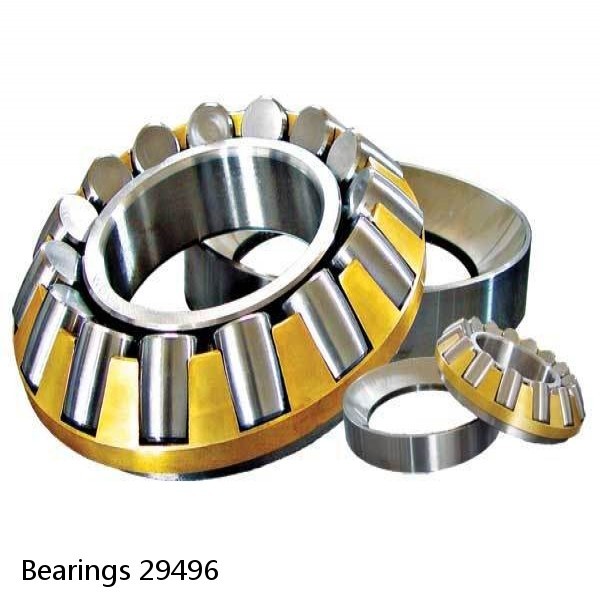 Bearings 29496
Bearings 29496 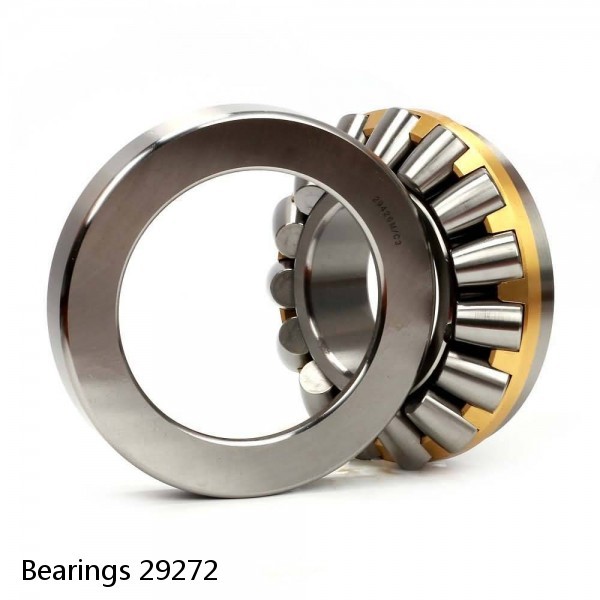 Bearings 29272
Bearings 29272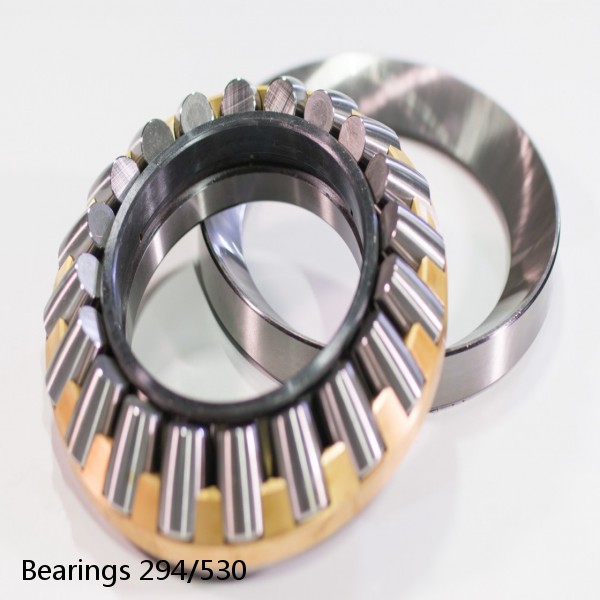 Bearings 294/530
Bearings 294/530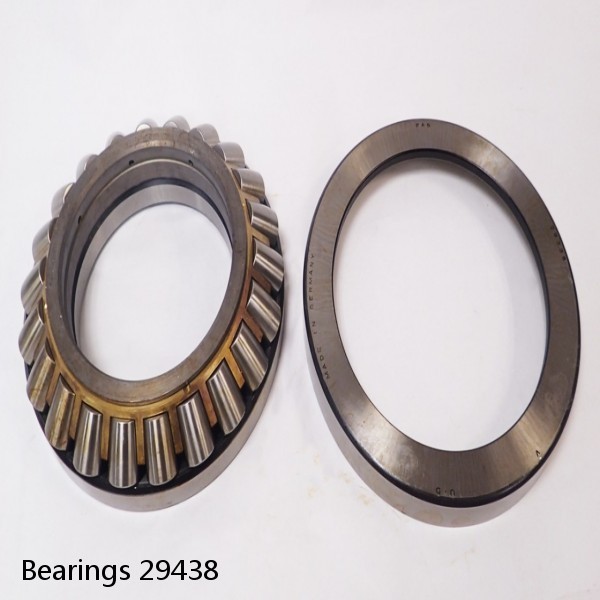 Bearings 29438
Bearings 29438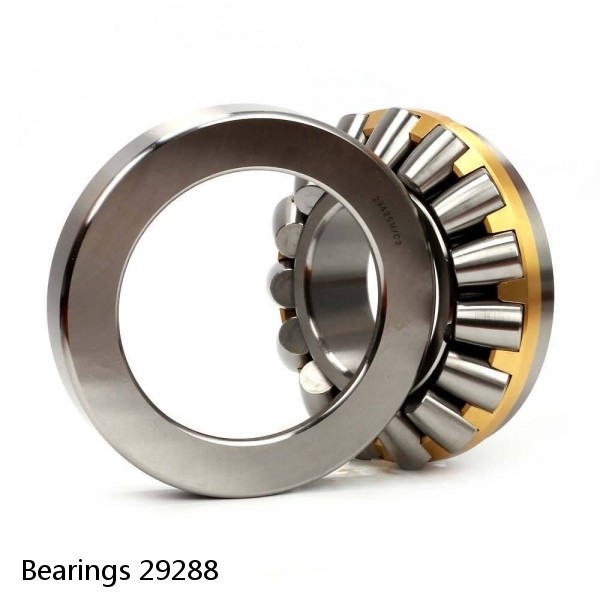 Bearings 29288
Bearings 29288